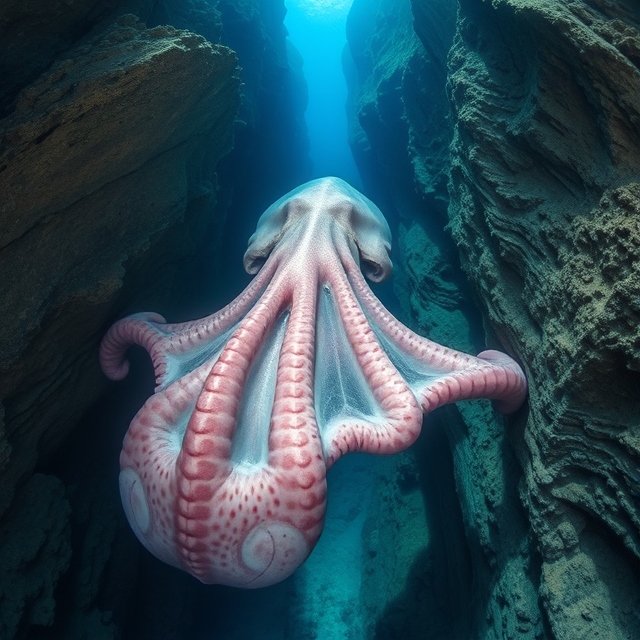Table of Contents
ToggleThe Mysteries of the Deep Sea
The ocean covers over 70% of our planet, yet much of it remains unexplored. Beneath the waves lies a mysterious and mesmerizing world, teeming with life forms and phenomena that boggle the mind. In recent years, advancements in technology have unlocked some of the secrets of the deep sea, yet many mysteries remain unsolved. This blog dives into the captivating realm of deep-sea mysteries, unraveling fascinating facts about the ocean that continue to intrigue scientists and explorers alike.

What is the Deep Sea?
The deep sea refers to the parts of the ocean that are below 200 meters (656 feet), where sunlight no longer penetrates. This vast, dark, and high-pressure environment hosts some of the most unique ecosystems and organisms on Earth. Despite the challenges of exploring such depths, researchers have been making remarkable discoveries about life, geology, and natural phenomena that occur far below the ocean’s surface.
Deep Sea Mysteries Unveiled
Here are some incredible deep-sea mysteries that scientists have uncovered—and others that still elude understanding.
1. Bioluminescence: Nature’s Light Show
Bioluminescence is a fascinating adaptation of deep-sea creatures. Organisms such as anglerfish, jellyfish, and certain types of squid produce their own light through chemical reactions. This phenomenon serves various purposes, including attracting prey, deterring predators, and finding mates.
Despite its prevalence, the intricacies of bioluminescence remain mysterious. Researchers are still unraveling how and why these adaptations evolved so extensively in the deep sea compared to terrestrial environments.
2. Deep-Sea Gigantism: Why Are Creatures So Big?
In the depths of the ocean, some species grow to astonishing sizes. The giant squid, colossal squid, and Japanese spider crab are just a few examples. Known as deep-sea gigantism, this phenomenon may result from cold temperatures, scarce food resources, and a slower metabolism in the deep sea.
However, scientists still debate why gigantism is so prevalent in the deep. What evolutionary pressures led to such massive adaptations?
3. The Alien-Like Creatures of the Deep
The deep sea is often compared to outer space due to its unexplored nature and strange inhabitants. From translucent sea cucumbers to barreleye fish with transparent heads, these alien-like creatures defy conventional biological norms.
Their unique adaptations—such as heightened sensory organs and bizarre feeding mechanisms—have evolved in response to extreme conditions. Scientists marvel at how such life forms thrive in an environment devoid of sunlight and scarce in nutrients.
4. The Deepest Point on Earth: The Mariana Trench
The Mariana Trench, located in the western Pacific Ocean, is the deepest part of the ocean, plunging nearly 36,000 feet (11,000 meters). Despite its depth and pressure, the trench is home to resilient creatures like amphipods and snailfish.
Even here, scientists have discovered microplastics, highlighting the far-reaching impact of human activity. Researchers are working to understand how life survives in such an extreme environment and what secrets the trench may hold.
5. Underwater Volcanoes and Hydrothermal Vents
Hydrothermal vents are underwater hot springs found along tectonic plate boundaries. These vents release mineral-rich water heated by magma, creating unique ecosystems supported by chemosynthesis instead of photosynthesis.
Organisms like tube worms, giant clams, and shrimp thrive near these vents, despite the harsh conditions. Scientists continue to study these ecosystems to learn how life can exist in environments once thought uninhabitable.
6. The Soundscape of the Deep
The deep sea is far from silent. It is filled with mysterious sounds, such as the “bloop,” an ultra-low frequency noise detected in 1997. While initially thought to be from a giant sea creature, the sound was later attributed to icebergs.
Still, many sounds recorded in the deep ocean remain unexplained. These auditory mysteries could be linked to unknown marine life or geological phenomena.
7. Lost Shipwrecks and Sunken Cities
The deep sea is a treasure trove of history, hiding shipwrecks and submerged cities. From Titanic’s wreckage to ancient relics off the coast of Egypt, underwater archeologists are uncovering stories of human history preserved by the ocean’s cold depths.
However, many wrecks remain undiscovered. Advanced sonar and robotics are helping researchers map these underwater time capsules, but much of the deep sea remains uncharted.
Challenges of Deep-Sea Exploration
Exploring the deep sea is no small feat. The extreme pressure, low temperatures, and complete darkness make it one of the most hostile environments on Earth. Specialized submarines, remotely operated vehicles (ROVs), and autonomous underwater drones are crucial for these missions.
Despite technological advancements, only about 20% of the ocean floor has been mapped. The deep sea remains the least understood part of our planet.
Why We Should Care About Deep-Sea Mysteries
Understanding the deep sea is more than a quest for knowledge; it’s essential for the planet’s health. The ocean regulates climate, stores carbon, and supports biodiversity. Discovering its mysteries can lead to advancements in medicine, technology, and environmental conservation.
Moreover, studying the deep sea provides insights into the resilience of life and helps us prepare for exploring extreme environments beyond Earth, such as other planets and moons.
The Future of Deep-Sea Exploration
The deep sea is an untapped frontier of discovery. With initiatives like NOAA’s Ocean Exploration Program and advancements in AI and robotics, humanity is poised to uncover even more about this mysterious realm.
As we continue to explore, one thing is certain: the deep sea will always hold a sense of wonder and mystery, reminding us of the vast unknowns that lie beneath the waves.

